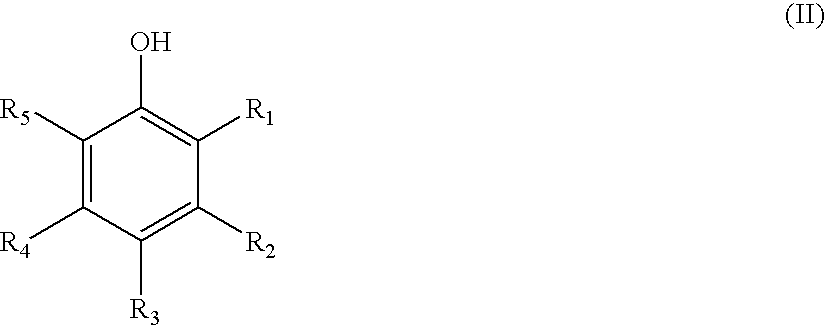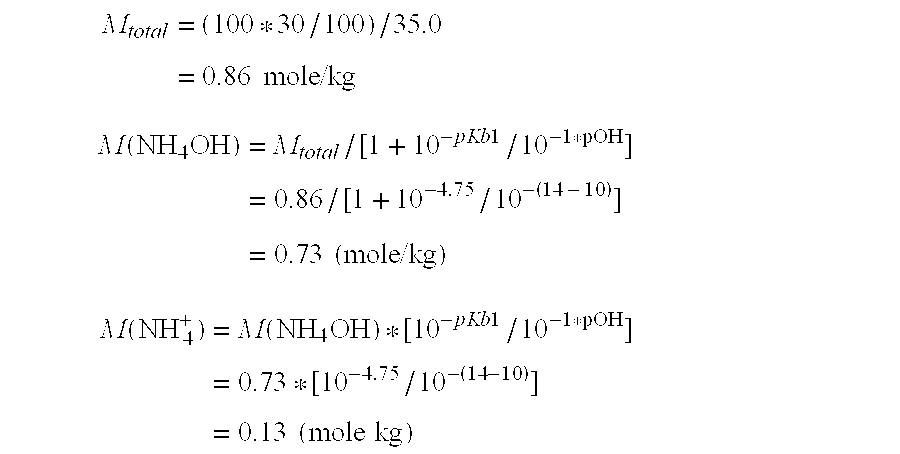Micelle thickening systems for hair colourant and bleaching compositions
a technology of compositions and thickening systems, applied in the field of thickening hair colouring and or hair bleaching compositions, can solve the problems of large number of constraints, high cost and complexity of manufacture of such product ranges, and the possibility of accidental contact with the eye or ingestion, etc., and achieve the effect of thickening hair colouring and or hair bleaching and or hair highlighting compositions
- Summary
- Abstract
- Description
- Claims
- Application Information
AI Technical Summary
Benefits of technology
Problems solved by technology
Method used
Image
Examples
examples
[0133] The following examples illustrate oxidative dye compositions according to the present invention. It is understood that the examples and embodiments described herein are for illustrative purposes only and that various modifications or changes in light thereof will be suggested to one skilled in the art without departing from the scope of the present invention.
examples 1-10
Mixed Compositions
[0134]
Ingredient12345Ammonium Carbonate2 7.54 5 5 Ammonium Hydrogen Carbonate—————Ammonium Carbamate—————Sodium Glycinate1.05.02.02.52.5Cetyltrimethyl Ammonium Chloride—————Sodium Lauryl Sulfate 0.8250.3— 0.825 0.825Sodium Laureth-3 Sulfate 2.480.9— 2.48 2.48Sodium Myristoyl Sarcosinate—————Sodium Lauryl Phosphate—————Sodium Laureth-3 Phosphate—————Cocamidopropyl Betaine 4.951.8— 4.95 4.95Sodium Lauryl Amphoacetate——3.6——Sodium Cetyl Sulfate (Branched)——1.4——Sodium Cetyl Ether-1 Sulfate (Branched)——1.4——Sodium Chloride 7.25—3.0 2.75 2.75p-phenylene diamine0.10.8—0.1p-amino phenol0.40.3—0.30.42,5-diamino-toluene sulphate—0.1—0.1—m-aminophenol——0.2——Resorcinol0.40.5—0.50.4napthol—— 0.03——4-amino-2-hydroxy toluene0.30.2—0.20.3Phenyl methyl pyrazalone———0.2—1-hydroxyethyl-4,5-diamino pyrazole sulphate———0.3—Basic red 51—0.1—0.1—Basic yellow 87—0.2—0.2—Hydrogen Peroxide (35% active) 2.8511.0 11.0 17.1412.85Amidomethicone(DCAP 6087)———1.0—Polyquaternium-22 (Merquat ...
examples 11-13
(Mixed Compositions) and Comparative Example (Mixed Composition)
[0135]
ComparativeIngredient111213Example 14Ammonium Hydroxide4.5—4.5—(29% solution)Ammonium Carbonate—5.0—2.2Sodium Glycinate—2.5——Sodium Lauryl Sulfate0.550.550.55—Sodium Laureth-3 Sulfate1.651.651.65—Cocamidopropyl Betaine3.33.33.35.0Stearalkonium Chloride———2.0Sodium Chloride102.75——Magnesium Chloride——1—Ceteareth-25—1.5——Cetyl Alcohol—1.12——Stearyl Alcohol—1.12——p-phenylene diamines0.10.10.1—p-amino phenol0.40.40.4—Resorcinol0.40.40.4—4-amino-2-hydroxy toluene0.30.30.3—Hydrogen Peroxide (35% active)2.8517.14116Polyquaternium-22 (Merquat 295)——0.1—Polyquaternium-37 &——0.2—Mineral oil (Salcare SC95)Xanthan gum—0.5——Aculyn 33———1.0EDTA (tetrasodium salt)0.10.10.1—Disodium EDDS———4.0Sodium Citrate———0.4Sodium sulphite0.10.10.1—Ascorbic Acid0.13.00.1—Propylene Glycol0.00.00.0—Etidronic Acid0.10.10.1—pH109.0109.0WaterqsqsqsQs
For examples 1-13, using the method to defined hereinabove the viscosity of the mixed systems ar...
PUM
| Property | Measurement | Unit |
|---|---|---|
| amphoteric | aaaaa | aaaaa |
| concentration | aaaaa | aaaaa |
| molar concentration | aaaaa | aaaaa |
Abstract
Description
Claims
Application Information
 Login to View More
Login to View More - R&D
- Intellectual Property
- Life Sciences
- Materials
- Tech Scout
- Unparalleled Data Quality
- Higher Quality Content
- 60% Fewer Hallucinations
Browse by: Latest US Patents, China's latest patents, Technical Efficacy Thesaurus, Application Domain, Technology Topic, Popular Technical Reports.
© 2025 PatSnap. All rights reserved.Legal|Privacy policy|Modern Slavery Act Transparency Statement|Sitemap|About US| Contact US: help@patsnap.com


